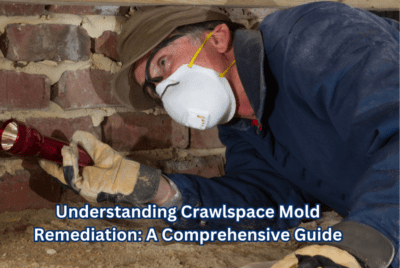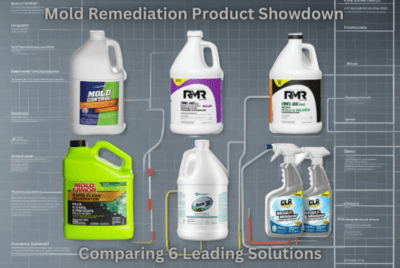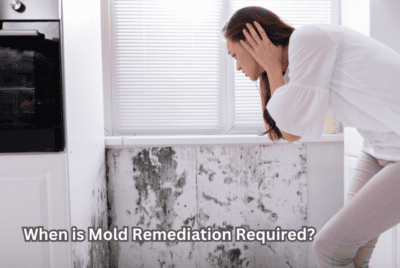Does Lysol Kill Mold?
As a mold enthusiast and consultant, people often ask me if Lysol works on mold. Molds are troublesome because they cause health problems and damage properties. In this article, we will talk about the advantages and disadvantages of using Lysol for killing molds by giving useful tips and reasons for our suggestions.
Understanding Molds
Molds are fungi which live in wet or humid surroundings. They reproduce via spores that can easily ride on air currents before coming to rest on various materials where they begin to grow. Different kinds of common molds include black mold (Stachybotrys chartarum), green mold (Penicillium), and white mold (Sclerotinia) each with their own characteristics including associated health risks.
The Hazards of Molds
Does Lysol Kill Mold?
Lysol is a famous household disinfectant claiming to kill 99.9% of bacteria plus viruses but what about its efficiency towards molds? The ability of Lysol to deal with certain forms of fungus remains controversial. This does not mean however that there aren’t cases where it can help.
When killing mold is concerned; typically Lysol works better on nonporous surfaces compared to porous ones but how does this apply here? It means that while tiles, glass or bathtubs can be disinfected by Lysol which also prevent their growth something like wood should not expect much from it due to being less effective when used against fabrics whose inner parts may harbor mildew colonies.
The extent of infestation matters too so do these other factors: type of surface; moisture content. Lysol effectiveness depends on how severe the mold issue is and whether there are alternate methods for total eradication.
Pros of Using Lysol to Kill Mold
However, even though Lysol might not be the best answer for all problems related to molds but it can be convenient in some cases. One major benefit is that these products are easily reachable since you can find them at most stores around your locality hence making this method quick enough to deal with minor issues.
Another thing worth noting is that sometimes when growths have just begun showing up their numbers may still be small thereby making such places suitable candidates for preventive measures using non-porous surface protectants like Lysol which will help keep things clean while inhibiting further spread through other areas which are not yet affected by these organisms.
Cons of Using Lysol to Kill Mold
Nonetheless, we should also recognize certain drawbacks associated with relying solely on Lysol as a means of eliminating molds from our homes/offices/workplaces. Mainly its inability to handle porous surfaces; because they allow air through unlike non-porous ones where nothing can pass across walls or floors etc. Besides drywall, carpets and upholstery fall under those categories thus rendering them unsuitable for treatment using this particular chemical compound due their ability to support deep growths that cannot easily be reached by Lysol alone.
Furthermore, another disadvantage stems from the fact that what Lysol do addresses only symptoms without dealing directly with root causes behind such developments being excess moisture or water damage so unless these underlying issues get attended too sooner rather than later then there will always come back even after applying Lysol repeatedly as directed.
Another disadvantage to relying exclusively on Lysol for removing mold is that it may not work against severe infestations. Professional intervention and specialized remediation techniques are required to completely remove mold spores on a large scale or when the problem has been around for long periods.
Substitutes for Lysol in Mold Removal
If Lysol isn’t the best solution in certain situations, there are other methods of getting rid of mold that can be used:
Engage professional mold remediation services: If you have a big mold problem or if the mold affects a wide area, it is recommended that you get help from experts. Certified professionals dealing with molds know what to do; they have done similar tasks before using different tools making them capable of handling such situations safely and effectively.
Natural remedies and do-it-yourself (DIY) options: For minor cases where there’s only 1% chance success rate through employing this product, natural remedies and DIY solutions can be adopted. Vinegar, hydrogen peroxide as well as baking soda are some examples of commonly used substances which kill molds naturally. However; these should be applied frequently since their strength might not be at par with industrial disinfectants like Lysol.
How to Use Lysol Efficiently Against Molds
Below are some tips on how one can maximize the efficiency of Lysol when applied on non-porous surfaces infected with molds:
Right way of applying it: Go by what is written at the back side label regarding usage instructions given by manufacturers for proper utilization results being achieved within short period without experiencing any difficulty along way until completion.. Ensure that you clean up first before spraying your working area so that everything remains dry after disinfected properly later leaving no room for reoccurrence which may lead into more damages occurring than anticipated.
Precautions while using Lysol: Take necessary precautions when handling any type of substance meant removing fungus from various objects including walls, clothes or even shoes. This means that you should have protective gear such as gloves, masks and goggles on standby lest they come into contact with harmful chemicals contained within disinfectants like Lysol. Also make sure there is proper ventilation where treatment takes place hence preventing inhalation light-headedness caused by vapors emitted during application process.
Conclusion
In summary, Lysol can serve as a handy tool for dealing with molds found on non-porous surfaces. It saves time and energy while at the same being effective against small scale mold problems but however it has its own limitations when used on porous materials or in severe infestations of molds. Apart from this one needs to find out what causes these fungi to grow then deal with them accordingly since failure which might call for an alternative approach like hiring professionals who specialize in removing molds naturally or through other means.
Do not forget that prevention combined with early detection plus appropriate remediation measures tailored towards specific circumstances remains most effective way of dealing with fungus infections.
FAQs (Frequently Asked Questions)
1. Can Lysol completely eliminate mold?
Using only Lysol may not fully eradicate fungus especially if it has spread across porous items; however this product kills 99% of them when applied directly onto nonporous surfaces so does help kill certain types which is why sometimes people say yes without being aware about their respective conditions.
2. Are there any health risks associated with using Lysol to kill mold?
There are no apparent risks as long as one follows instructions carefully but in case someone experiences irritation due to strong smells produced during spraying or when inhaling fumes given off by chemicals used then there might be need for better ventilation system inside area affected thereby reducing respiratory discomfort caused by exposure.
3. Can I use Lysol as a preventive measure against mold?
Yes, applying small amounts regularly on non-porous objects helps inhibit growth thus keeping them clean always but remember to repair any form water damage for effective prevention.
4. How often should I use Lysol to combat mold?
The amount of times Lysol is used to get rid of mold depends on how bad the mold is and what caused it in the first place. If there’s only a little bit of surface growth, giving things a regular cleaning with Lysol might be enough. But if you’ve got a recurring problem or if the fungus has spread over 10 square feet, you should probably call in a pro or try something else.
5. Are there any green alternatives for getting rid of mold instead of using Lysol?
Yes, there are eco-friendly substitutes for eliminating molds. Natural remedies such as white vinegar, hydrogen peroxide and baking soda can kill off colonies of fungi effectively too. Additionally, commercially available environment friendly products made out of naturally derived substances can also serve as effective means to remove molds from homes.
Always consider whether it works, think about safety and weigh options before choosing how to remove this thing called mold.
Disclaimer: The information presented in this post is not professional advice but general pointers; it is always best practice to consult an expert when dealing with specific mold problems or remediation techniques.




